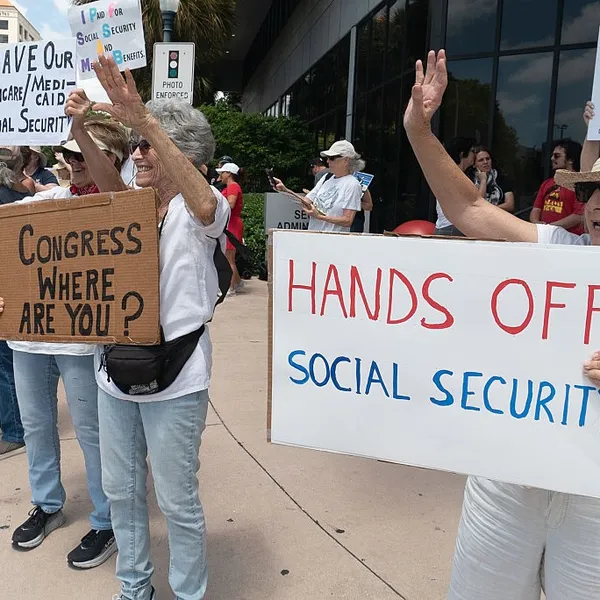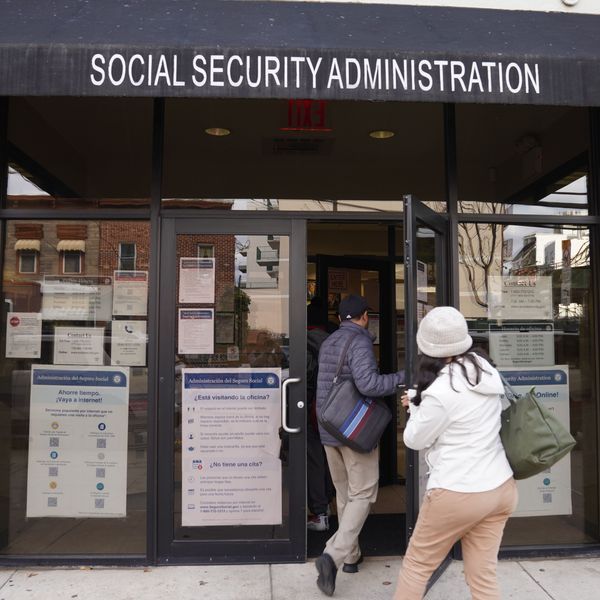The Japanese have a wise expression: Isoga ni bamaware. It means, "When you're in a hurry, take the long way around."
It could not be any more relevant than right now, with President Bush trying to stampede the country into abandoning the most successful government program of the last 70 years: Social Security.
Though he hasn't offered any proposal of how he'd address its problems, the president has been running around telling people that Social Security is "in crisis," "flat broke" and "bankrupt." This is simply not true.
In 1983, a commission headed by Alan Greenspan looked at Social Security and determined it would need more resources to pay for the Baby Boomers' retirement. They quite sensibly raised taxes and reduced benefits.
The result is a $1.6 trillion surplus in the Social Security trust fund. By 2018, the fund will have more than $5 trillion in such federal Treasury bonds, all laid away to help cover the Baby Boomers' retirement. According to the Social Security system's trustees, it can pay 100 percent of benefits until the year 2042 with no changes to the system whatsoever.
Does this sound like "in crisis," "flat broke" or "bankrupt"? It sounds more like crying fire in a swimming pool, but that's the strategy the president has come to choose for proposals that are otherwise unmarketable. Remember weapons of mass destruction?
Now, just to put all the cards on the table, Social Security does have a $3.7 trillion shortfall from 2042 to 2080 -- fixable the same way it was in 1983. But that is small potatoes compared to the president's plan to "save" the system.
The president wants to give younger workers "personal accounts" to supplement their Social Security benefits. But because payments into these accounts would drain money from the trust fund, he would need to borrow a minimum of $4.9 trillion over 20 years to cover the "transition costs," according to the Center on Budget and Policy Priorities, a Washington think tank. Borrowing nearly $5 trillion to fix a $3.7 trillion problem should raise some questions on its own. It will suck capital out of the economy, driving up the costs of all borrowing. Homes, automobiles, credit cards, tuition -- all will suffer higher financing costs, a drag on economic growth for the next 60 years.
But when you learn the truth about these "private accounts," it becomes a four-alarm fire: Nobody gets any money from their private account until they've paid back their share of the transition costs. According to the plan as explained by an administration spokesman last month, unless your returns in the market over 40 years beat the rate of inflation by at least 3 percent, you will never see a single cent. The government keeps it all to pay itself back for the transition costs as well as the lost payroll tax revenue, that same official said.
Worse, according to projections from the Center on Budget and Policy Priorities, those who buy into private accounts will suffer substantial cuts to what is left of their Social Security benefits. If you were born in 1970, for instance, your scheduled benefits will be cut by 27 percent; if you were born in 1980, you will see a 36 percent reduction. So much for the visions of nouveau gentility Bush has been invoking to sell this thing. The only certainty in the president's plan is that we will accumulate more debt and take on greater risk while facing mandatory cuts in benefits -- though his patrons on Wall Street will realize billions of dollars in fees.
Finally, we would not even be having this discussion if the president's own policies had not so undermined the nation's fiscal health. We could have easily paid the $3.7 trillion long-term shortfall in the Social Security trust fund from general funds and still had money left over. Bill Clinton left the government with a cumulative $5.6 trillion 10-year federal budget surplus. But now, 10-year forecasts call for as much as $6 trillion of deficits. In other words, our 10-year fiscal situation has deteriorated by almost $12 trillion in only four years. That's more than three times the entire cost of the 75-year Social Security shortfall. And Bush accomplished this breathtaking feat of fiscal malfeasance by giving huge tax cuts to the very wealthiest -- his "base," as he calls them. Over their full life, the Center on Budget and Policy Priorities notes, those tax cuts could cost the treasury $18 trillion - - five times the cost of the Social Security shortfall.
The president wants to bail on Social Security because he has already slipped the post-Cold War surplus to his rich benefactors and he doesn't want to have to take it back. But his plan to "save" the system is like cutting your throat to cure a nose bleed.
Isoga ni bamaware. We would be wise to stop the stampede and look much more closely at this proposal.


